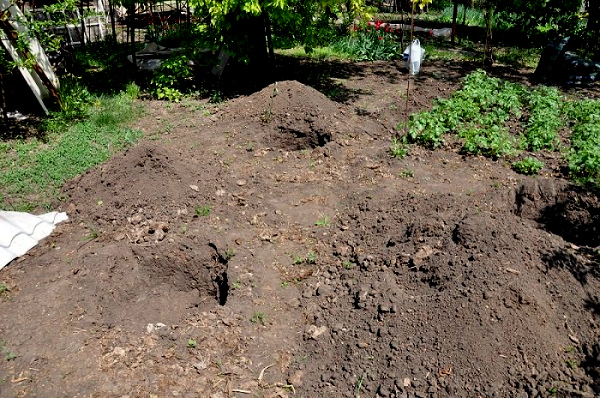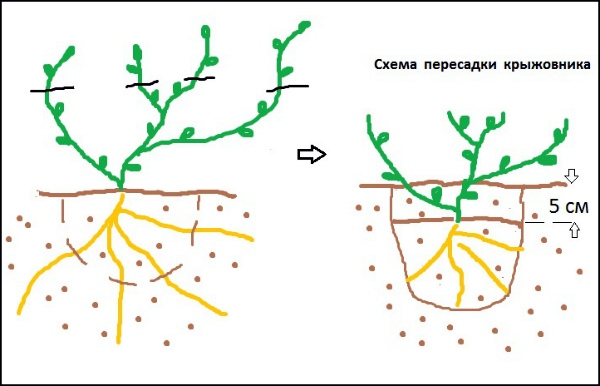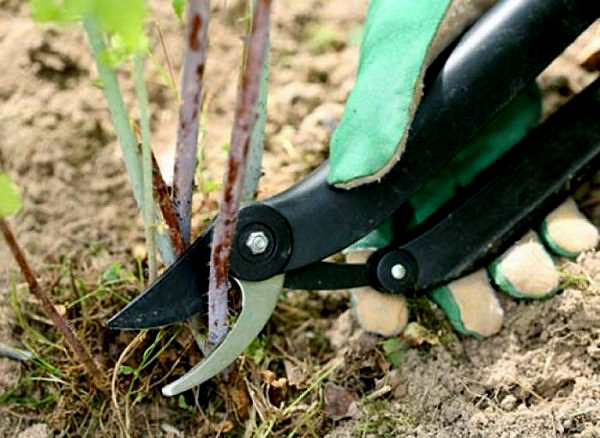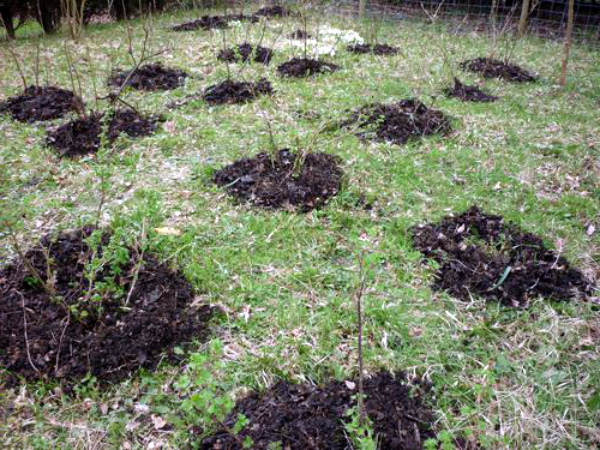Correct gooseberry transplant
Content
Seat selection
Gooseberries can be transplanted in spring or fall. Most gardeners prefer to do this in the fall, when the plant has almost completed its annual growing cycle, begins to prepare for winter, that is, for a dormant period. In August and September, the beds are usually prepared for the next season; from this point of view, it is also better to make room for spring plantings in advance.
In the spring, it is more difficult to determine the time for a transplant, more precisely, it is difficult to guess it correctly. Gooseberries begin to grow very early and quickly, the very first warm days contribute to the rapid movement of juices, swelling of the buds - the plant rushes rapidly to flowering. The end of May is usually already marked by the presence of small fruits. This means that you need to plant a bush before the start of sap flow, immediately after the ground thaws.
In the fall, you can decide on the time much easier, knowing approximately when frosts come annually. In late September or early October, after the bush has shed its leaves, when all vital processes slow down, it will more easily tolerate stress and the inevitable root injury caused by transplantation. Moreover, before frost, it will have time to take root in a new place.
It is very important to find and prepare this newest place correctly. It should be sunny, but protected from strong winds. Before that, currants or raspberries should not grow on it, since gooseberries with these crops have the same diseases and enemies among parasites. If you plant a gooseberry right after such predecessors, it will have a hard time, most likely, the bush will hurt. He will not like it if underground waters lie close to the surface, or for other reasons the water can stagnate. Gooseberries love moisture, but not stagnant water, which contributes to fungal diseases, and most older varieties have no immunity to powdery mildew.
A thorny bush will take root well on non-acidic, fairly light and nutritious soil. Loam works best for him. If in the area chosen for it, the soil is too light - you can add clay, if it is too heavy and dense - you can add sand and peat. The site should be dug up, cleaned of all plant residues, old roots, debris. If it is necessary to deoxidize the soil, you need to add lime.
It is advisable to check the acidity of the soil before planting plants for which it is important. This can be done on your own, having previously prepared the "reagents".
To determine the pH of the soil, you need to take a handful of currant or cherry leaves, put it in a half-liter jar, pour boiling water, and close it with a tight lid. After the water has cooled down, a lump of earth is placed in it and the color change is monitored. Retention of green color indicates a normal level of acidity, if a red tint appears - too acidic, if blue - not acidic enough.
Transplant methods
When the place is determined and prepared (and on it you need to dig a hole at least 50 cm deep and up to 80 cm in diameter), it's time to move on to digging and preparing the bush. The gooseberries are cut off strongly - you need to remove all the old branches, and the new shoots, of which there will be no more than 7, should be shortened by a third. Then they dig in a circle with a diameter of 30-40 centimeters around it. Usually the roots occupy the area indicated by its crown. A bush well dug to a depth of half a meter is taken out with a shovel, pitchfork, crowbar or other tools, together with an earthen lump, pulling at the same time by the base, and transferred to a film or cloth. On this tape, he is transported to a new place of residence. The roots are not specifically freed from the ground (unless they are sick and rotten), but the visible parts are examined, cut off a little, and the wounds are sprinkled with wood ash.
A couple of buckets of water are poured into the prepared hole (it should be wider than the roots), the removed soil mixed with compost or rotted manure is poured onto the bottom with a slide, and a bush is placed on top, the roots are straightened, and sprinkled with the rest of the earth. It is advisable to deepen the bush 5 centimeters more than it grew before. The earth is tamped, watered with a couple of buckets, it is advisable to make a hole or groove with sides so that the water does not spread past, but falls precisely to the roots. After that, the area around the stems is covered with dry soil and mulched with peat or straw.
Some gardeners add fertilizer when transplanting, but this is quite dangerous for disturbed and cut roots. Most experts are inclined to believe that, in addition to compost, perhaps wood ash can be added, and mineral fertilizers can be applied in the spring.
If transplants require not one, but several bushes, then more space is prepared. The entire large area allotted for planting gooseberries is dug up, cleaned, and the acidity or air permeability of the soil is corrected, if necessary. And then they prepare pits for each bush separately, it is advisable to leave a distance of more than a meter between them - usually 1.3 m or 1.5 m.
With a spring transplant, a hole is dug as soon as the ground thaws. It immediately becomes clear whether the plantings are threatened with stagnant water. If it turns out that there is such an opportunity, you need to dig a hole deeper and make a drainage layer of fine gravel or pebbles, and then pour the earth and plant the plant.
Post-transplant care
Gooseberry is an unpretentious and viable plant. A healthy bush tolerates transplanting well. Moreover, a correctly carried out transplantation in a convenient and fertile place can rejuvenate it and increase its yield. By replanting an adult plant in the fall, you can expect the harvest next year. The exception is a health-improving plant transplant, which grew in the wrong place, hurt. In this case, the harvest can be in a few years - from 2 to 4, depending on the degree of neglect and pruning of the plant.
After planting in the fall, the plant is watered regularly (pushing and returning the mulch after watering to its original place) until frost. If necessary, fertilizing is applied in the spring, when the bush has taken root and began to grow. Then urea, potash and phosphorus fertilizers are applied. If there is no urgent need, they get by with seasonal feeding, adding a little fermented slurry or poultry droppings to the water.
After the spring transplant, they also monitor the moisture content, only you need not to overdo it, pay attention to the amount of precipitation. Further care consists in weeding, feeding, pest control. Since the roots are shallow, it is better to remove the weeds by hand, and after watering, renew the mulch layer.
Video "How to transplant berry bushes in spring"
This is a video about how to transplant gooseberries, currants, yoshta in your country house in the spring.





